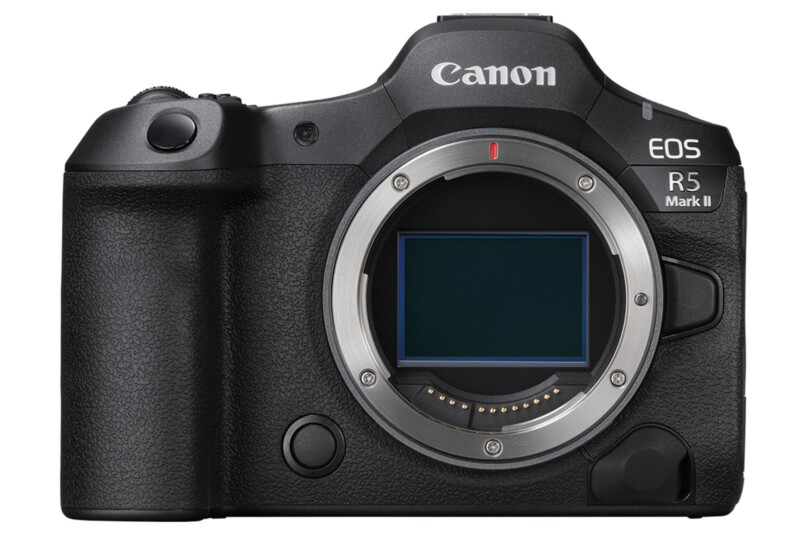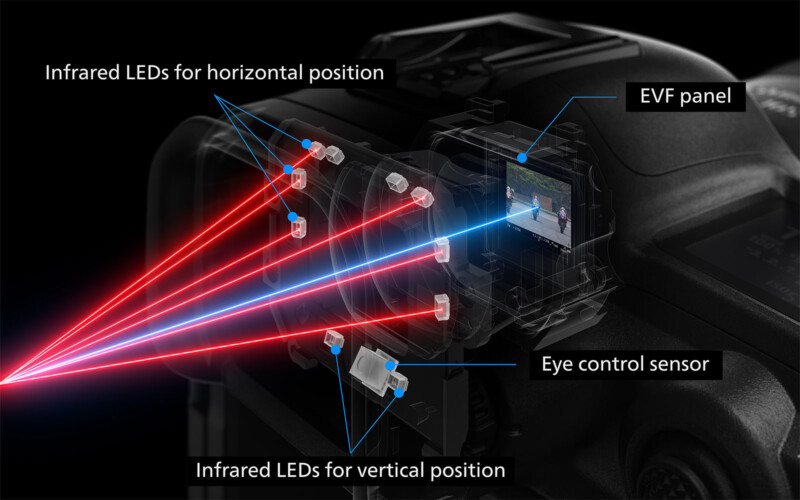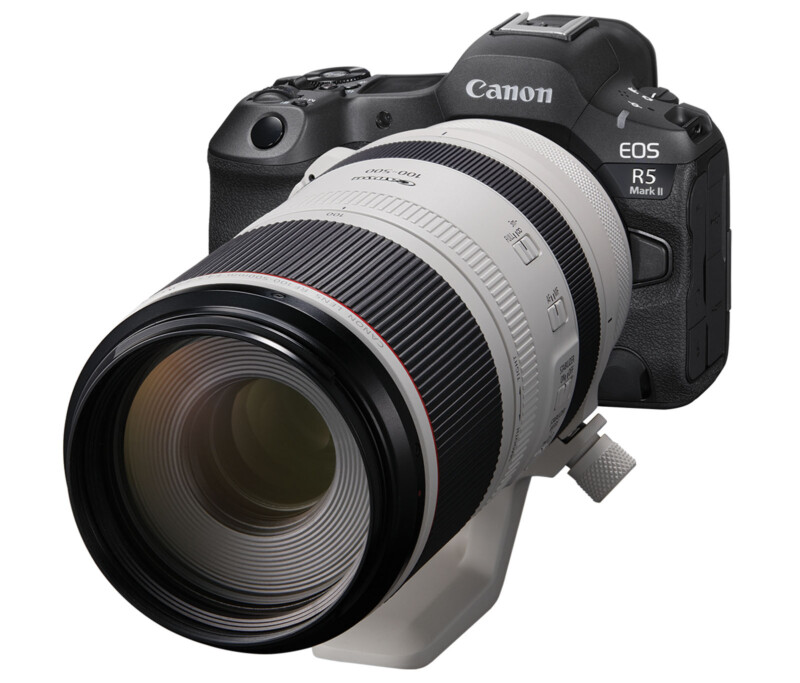![]()
What makes a great wildlife camera? Excellent image quality, lots of megapixels, strong autofocus performance, fast shooting speeds, robust build quality, and access to great telephoto lenses. The new Canon EOS R5 Mark II checks all these boxes, and then some.
While Canon has expressly noted the wildlife capabilities of its new flagship EOS R1 camera, as a longtime wildlife enthusiast, the R5 II seems to be the much more compelling option.
Resolution
As an experienced, albeit not professional, wildlife photographer, the first thing that jumps out to me is the Canon R5 II’s 45-megapixel stacked image sensor. At 45 megapixels, the sensor produces an 8,192 x 5,464 image, which offers ample room to crop to effectively bring distant animals closer.
Wildlife photography is challenging enough as it is without needing to worry about whether cropping will destroy the image quality. In the case of the R5 II, an effective APS-C (1.6 times) crop, either in-camera or during post-processing, will produce a 17.3-megapixel file (5,088 x 3,392). That’s large enough for many applications. And hey, if an animal is close and you don’t need to crop, you have 45 megapixels of glorious detail to enjoy.

Autofocus
Canon’s Dual Pixel CMOS AF has always been a sound autofocus system, and it has gotten significantly better on the new R5 II.
Cross-type performance has been improved here, ensuring better focusing performance during vertical shooting and when focusing on subjects with complex repeating patterns (like fur and feathers). Further, the faster stacked image sensor ensures better readout, which translates to improved autofocus performance alongside the new DIGIC X co-processing unit, also featured in the R1.
![]()
The R5 II’s autofocus system covers the entire image area, including during tracking autofocus. Users can manually select from points across 90% of the horizontal image area and 100% of the vertical area. This is beneficial when trying to focus on a fast-moving subject, as it can be hard to keep it in one specific portion of the frame.
The R5 II also features the R3’s electronic viewfinder, which is not only large and sharp but also includes the hardware for Eye Control AF. Once it’s calibrated to their eye, photographers can use this system to look at where they want the camera to focus. It is intuitive, smooth, and extremely effective when photographing moving subjects.

As expected, the R5 II has AI-powered subject detection features for various subjects, including four specific ones for animals: dogs, cats, birds, and horses. In my experience with the Canon R6 II, the camera will also do perfectly well with insects and reptiles. The camera also has eye-detection capabilities that work alongside its animal-detection features.
Speed
Animals are unpredictable, and some are very quick. A good action photo requires capturing the perfect moment, which is made much easier when a camera can shoot quickly. The R5 II and its stacked sensor allow photographers to shoot 45-megapixel RAW images with full autofocus at up to 30 frames per second.
A high-speed “spray and pray” approach requires a large buffer, and the R5 II performs fairly well here. However, the omission of the latest CFexpress 4.0 standard hurts a bit. To be fair, no camera uses CFexpress 4.0 yet, but the R5 II would have really benefited from it.

When shooting normal RAW photos at 30 frames per second, the buffer depth is just 93 frames (85 when doing RAW+JPEG). However, if users opt for Canon’s C-RAW (compressed RAW) mode, the buffer increases to 170 RAW shots (160 RAW+JPEG frames). To ensure that photographers don’t miss the right moment, C-RAW is the right choice for action photography.
Speaking of not missing the moment, the R5 II also includes a pre-capture burst mode, which can shoot for up to 15 frames (half a second). It may not sound like much time, but pre-burst modes in other cameras have proven highly beneficial in the real world when it’s not always easy to press the shutter in time. Further, when the buffer depth is generally smaller, you don’t want to be laying on the shutter release all the time anyway. Pre-capture shooting is just a little extra help, and it’s welcome assistance.
Build Quality
The new EVF has already been mentioned, but it’s worth noting that the R5 II is a well-designed camera. The controls are in comfortable spots, and the camera is reasonably compact and lightweight, given its capabilities and build quality. It doesn’t sport the vertical grip of the R1 or R3, although optional battery grips are available, but it otherwise feels like a professional-grade Canon camera.
![]()
Wildlife photographers know firsthand that two things are entirely unpredictable out in the field: the animals and the weather. The R5 II is not waterproof or anything, but it is sealed against typical adverse weather conditions like rain and snow. Photographers should always do what they can to protect their cameras, but they can use the R5 II with the peace of mind that a bit of weather isn’t going to hurt it.
Lenses
Slowly but surely, Canon has been expanding its RF lens lineup. While photographers can always adapt EF glass to an EOS R camera like the R5 II, many prefer native glass because autofocus performance can noticeably suffer.
Canon currently offers more than 40 RF lenses, including great wildlife zoom lenses like the RF 70-200mm f/2.8 (and f/4), RF 100-300mm f/2.8 L IS USM, RF 200-800mm f/6.3-9 IS USM, RF 100-400mm f/5.6-8 IS USM, and RF 100-500mm f/4.5-7.1 L IS USM (one of my personal favorites).
There are also many primes, including pro ones like the RF 400mm f/2.8 L IS USM, RF 600mm f/4 L IS USM, RF 800mm f/5.6 L IS USM, and RF 1200mm f/8 L IS USM. Those are all huge, heavy, and expensive lenses, so photographers on a budget can also opt for the sub-$1,000 RF 600mm f/11 IS STM and RF 800mm f/11 IS STM primes, assuming they have enough light to shoot at f/11.

Canon also offers two teleconverters for compatible RF lenses, including the RF 1.4x and RF 2x converters.
The primary takeaway is that wildlife photographers need not want for RF lenses. Canon has an excellent assortment of great telephoto lenses at every price point.
The Canon EOS R5 II Is an Amazing Choice for Wildlife Photography
There are many good cameras for wildlife photography on the market, but for those in the Canon ecosystem with $4,300 to spend, the R5 Mark II is the new best choice. I can’t wait to see what wildlife photographers can do once they get the R5 II.
Image credits: Photos courtesy of Canon unless otherwise noted. Header image features a photo from Canon Explorer of Light Keith Ladzinski. He has gone hands-on with the R5 II for wildlife and bird photography.
